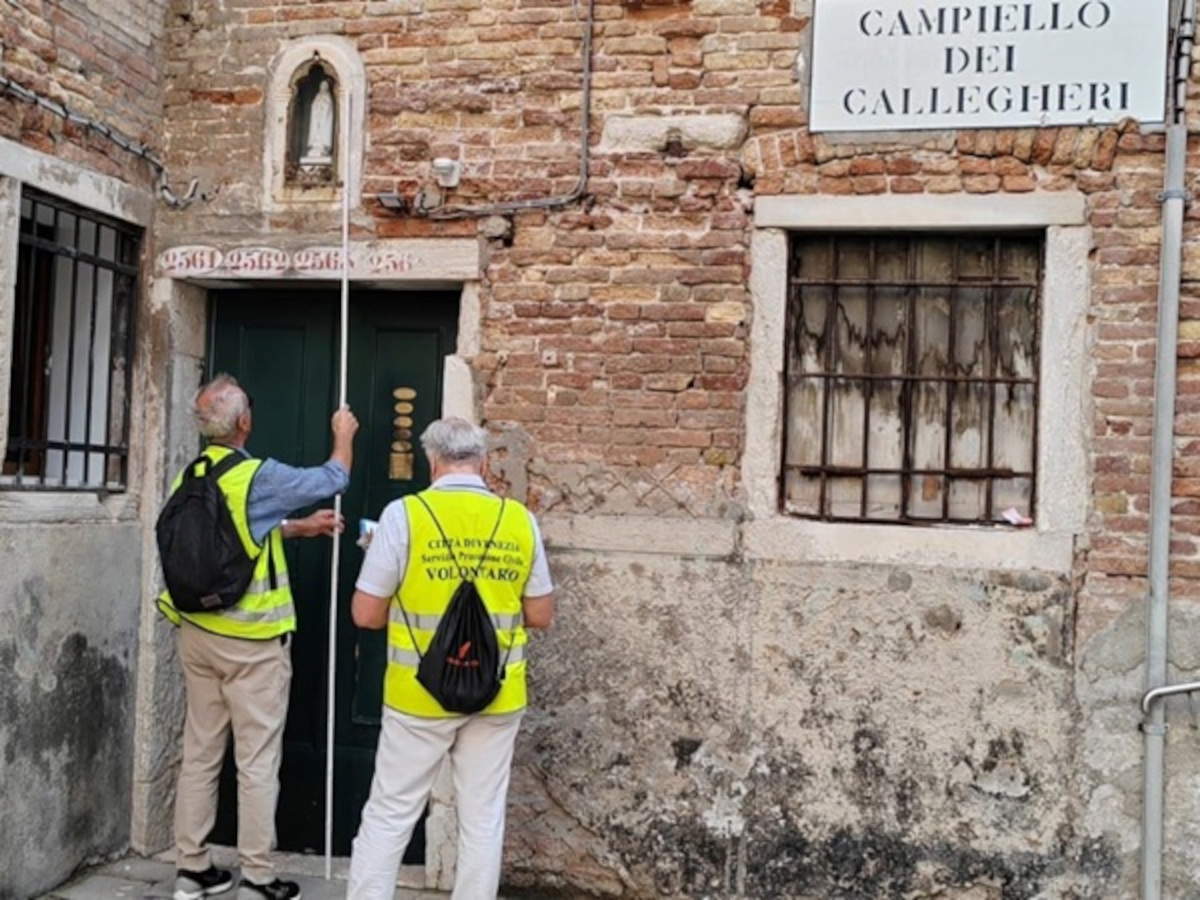Venice enshrines precious fragments of history and culture in every corner, but the already fragile city is undergoing continuous transformations due to bothhuman action and the effects of weathering, increasingly accentuated by climate change. At particular risk of disappearing are lesser-known heritages such as bas-reliefs, coats of arms, sculptures and inscriptions on the walls of buildings.
Raising the alarm is a new survey by Ca’ Foscari University Venice, published in The Innovative Pathway on Sustainable Culture Tourism. The research, edited by Margherita Zucchelli together with Monica Calcagno and Elisabetta Zendri, analyzed the state of conservation of more than 600 of these precious treasures in the Cannaregio district. In addition to documenting the conditions of degradation, the study proposes the creation of two alternative cultural itineraries - Cannaregio nascosta Nord and Cannaregio nascosta Sud - with the aim of having these treasures rediscovered and promoting more conscious tourism.
“Proposing alternative cultural itineraries based on diffuse heritage is a concrete strategy to promote a more conscious and sustainable tourism,” explains Monica Calcagno, professor of management at Ca’ Foscari’s Venice School of Management. “It means enhancing the existing, distributing flows and allowing those who visit the city to discover the authentic soul of Venice, the one that lives in its less-traveled calli.”

The research is based on visual impact: the systematic comparison of archival photographs, from the 1970s to the present, and current images. The results speak for themselves: faces carved into the marbles are eroding, inscriptions are becoming increasingly difficult to read, blackened surfaces pockmarked by salt and pollution testify to inexorable degradation. Crucial was the collaboration of volunteers from the Venice Civil Defense’s Cultural Heritage Protection Unit who, since 2006 and in agreement with the Soprintendenza, have been keeping an inventory of the so-called “minor” heritage spread throughout the city.
The research is part of CREST (Cultural Resources for Sustainable Tourism) activities, part of the PNRR CHANGES project, funded by the Ministry of University and Research.A call to action, to raise awareness about the vulnerability of these heritages and the need to implement protection and maintenance strategies.
“The work of volunteers has been crucial. This research shows that heritage protection is not just the task of experts, but comes from the love and daily care of those who live the city,” says Margherita Zucchelli, author of the study. “Citizens are the first custodians of the city’s memory, and their contribution has been invaluable in documenting the transformations of these works over time.”
“With this research, we wanted not only to study and catalog these ’hidden treasures,’ but also to illustrate the scientific evidence of the impacts of climatic and anthropogenic changes on cultural heritage, involving people in the direct experience of identifying and understanding the transformations and their magnitude,” concludes Elisabetta Zendri, professor of Chemistry of Cultural Heritage at the Department of Environmental Sciences, Informatics and Statistics. “It is necessary to offer inhabitants and people visiting the city a new key to explore Venice, away from the crowds, and to make people understand how even the apparently less significant and well-known assets are valuable sentinels for understanding the climatic and social changes the city is going through.”

 |
| Venice, lesser-known heritages at risk of disappearing: new Ca' Foscari University research |
Warning: the translation into English of the original Italian article was created using automatic tools. We undertake to review all articles, but we do not guarantee the total absence of inaccuracies in the translation due to the program. You can find the original by clicking on the ITA button. If you find any mistake,please contact us.